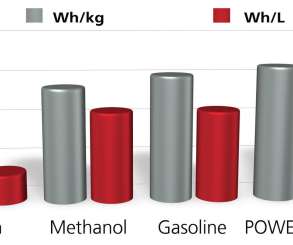Fraunhofer suggests e-scooters as application for its magnesium hydride paste hydrogen storage technology
Green Car Congress
FEBRUARY 4, 2021
Researchers at Germany’s Fraunhofer Institute for Manufacturing Technology and Advanced Materials IFAM in Dresden have developed an ultra-high-capacity hydrogen storage substance for PEM fuel cell applications based on solid magnesium hydride. Fraunhofer’s POWERPASTE releases hydrogen on contact with water. 1 kg hydrogen).








































Let's personalize your content